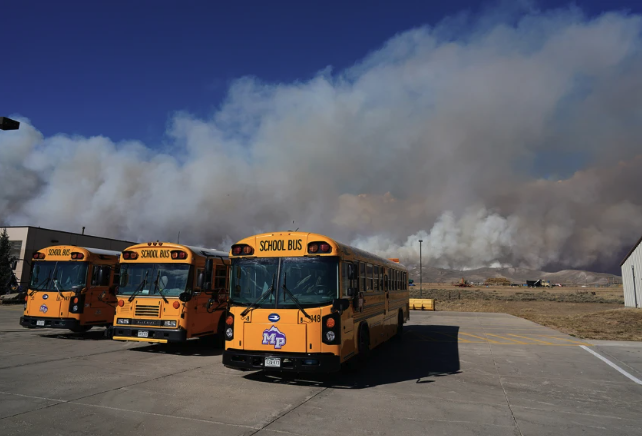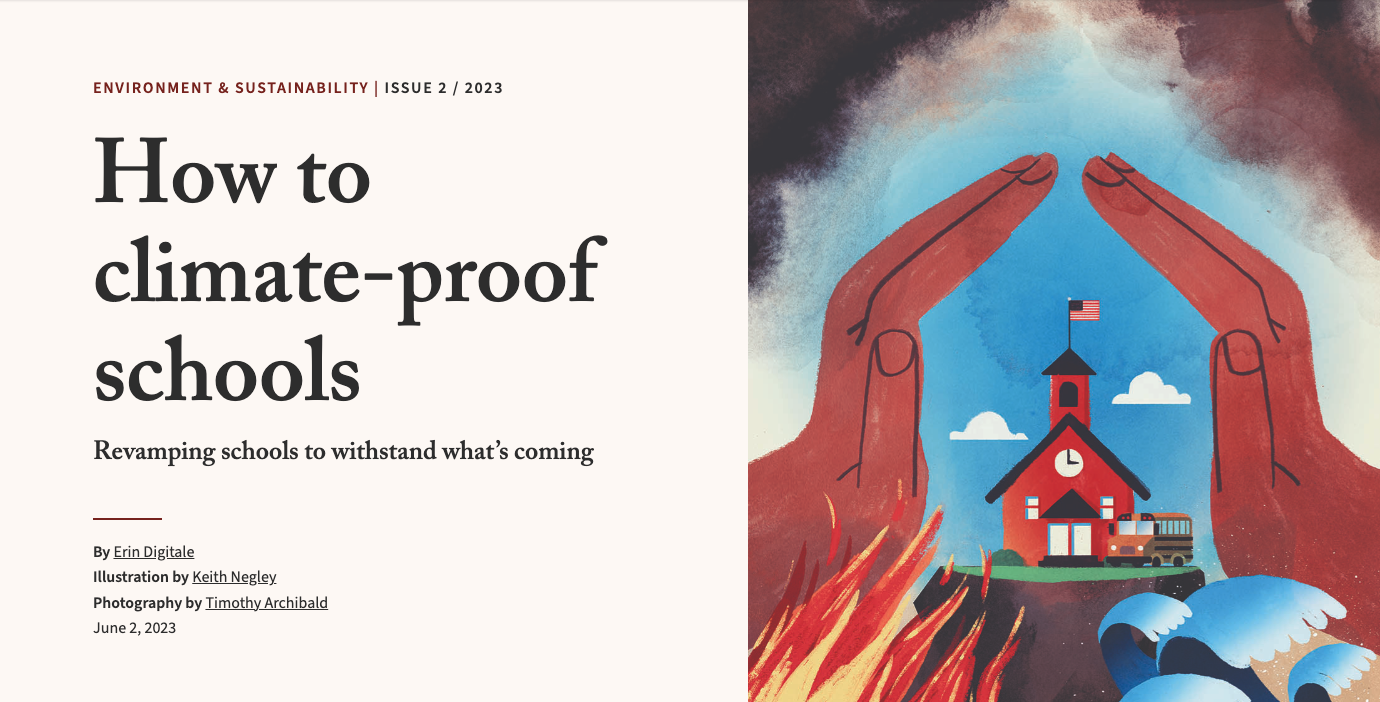
It’s Not Just Snow Days: How Can Districts Work Extreme Weather Into Their Calendars?
“This is a threat multiplier for educational inequity,” Klein said. “It’s a serious issue that directly impacts kids’ learning opportunities.”

Two Massachusetts schools are ditching oil for geothermal heat pumps
The upfront costs for geothermal heat pumps in New Bedford would normally be nearly $14 million. But with federal and state rebates, installation costs will drop to about $6.1 million.

Sacramento City Unified commits to carbon neutrality by 2045
“There’s urgency behind the transition: State officials have noted the increasing climate impacts on California schools and the need to adapt buildings to weather these changes.”

Schools Can Use These Little-Known, Unlimited Funds to Make Their Buildings Greener
“Unlike a grant program with a fixed amount of money for districts to spend on particular expenses, schools and other tax-exempt entities like local and tribal governments can get reimbursed for work that’s already been completed simply by correctly filing tax return forms with the Internal Revenue Service.”

This Is Your Kid’s Brain on Extreme Heat
It’s too hot for school, as stifling classrooms cause some teachers to switch to remote learning—or cancel lessons altogether. And the heat will only get worse.

How California schools can finally quit burning fossil fuels
“Statewide planning is key to making safe, electrified schools a reality. With more than 11,000 buildings spanning 730 million square feet and more than 125,000 acres of land, California’s school system has a vast footprint. We need a plan now for all these buildings to stop creating pollution.”

School week ends with more heat in the classroom
Sara Ross speaks with NBC Boston about extreme heat in local schools as officials tried to assure the community that in the few schools that were not able to be outfitted with air conditioning, they provided fans and water.

As schools reopen in a heat wave, a warning of the climate future
Many schools in Massachusetts need HVAC upgrades to not only heat their buildings in winter, but keep things cool as temperatures increase.

What Educators Need to Know About Schools and Hot Weather
We’re having these breaks and disruptions in our in-person learning, and those disruptions are inequitably felt. Communities that have been redlined, underinvested in over decades are the ones where the school buildings are more out of date.”

Polluted Skies and High Heat Expose School Facility Issues, Threaten Students’ Health
“The wildfire smoke, the heat, the drought, flooding—all the impacts of climate change are here,” said Jonathan Klein, co-founder of Undaunted, a national nonprofit that advocates for solutions to fight climate change. “Schools are where students spend more of their waking hours than anywhere else. We need to make sure they’re resilient and prepared for extreme weather events.”

How to climate-proof schools: Revamping schools to withstand what’s coming
Closing schools is a common, but unsustainable, response to heat waves, wildfires and other extreme climate events.
“Kids are losing out on learning time,” said Jonathan Klein

How can we shield children from the impacts of climate change? Investments in schools can help.
“In terms of a broader climate strategy, and the transition to clean energy that we need to make, school should be some of the first places we do that work. Because that’s where young people are: 1 in 6 Americans is on a school campus every day.”
Coalition urges California to invest $150 billion in climate-resilient, healthy schools
“A coalition of health, city planning and education nonprofits issued a report Thursday urging California leaders to invest $150 billion over a decade to build and renovate schools to mitigate to the increasingly hazardous effects of climate change on children’s health and well-being.”

Most Schools Burn Fossil Fuels for Heat. Here’s Why That’s a Problem
More than half the energy used in K-12 schools goes toward heating and cooling buildings. And more than 60 percent of school HVAC systems’ energy use is tied to on-site burning fossil fuels, the primary driver of climate change.'
